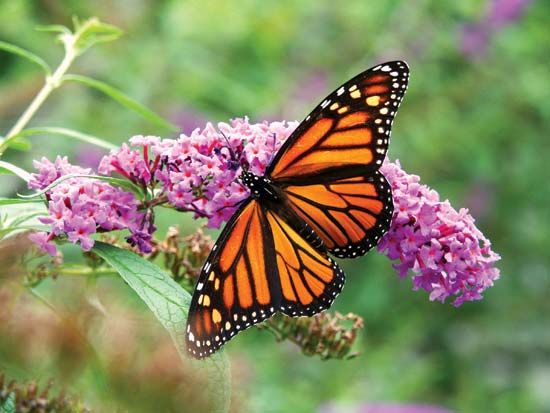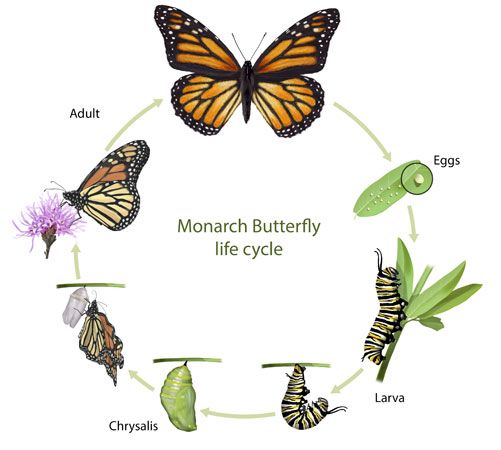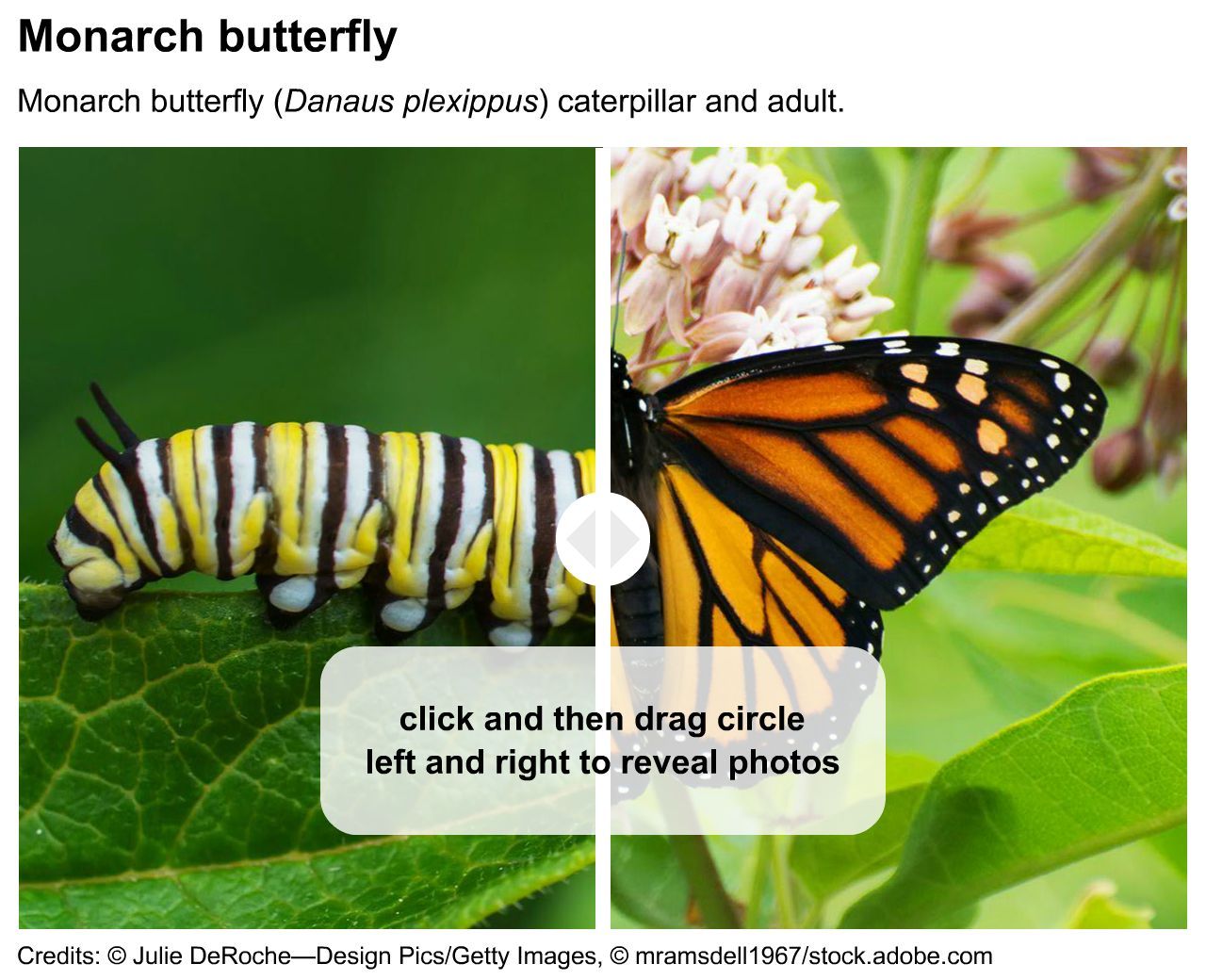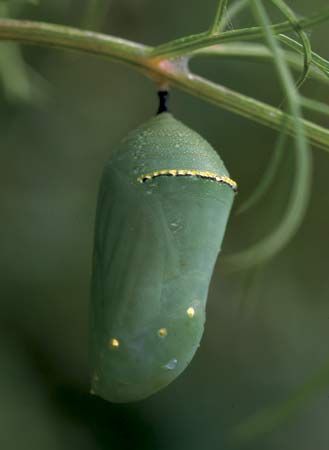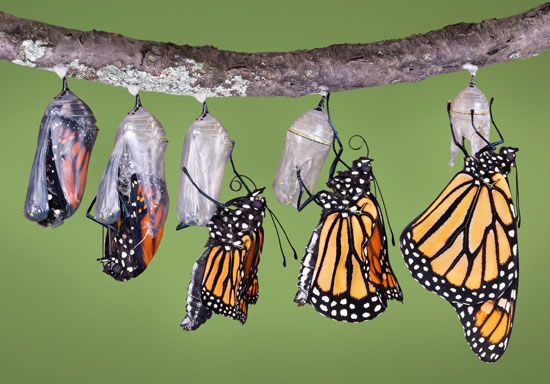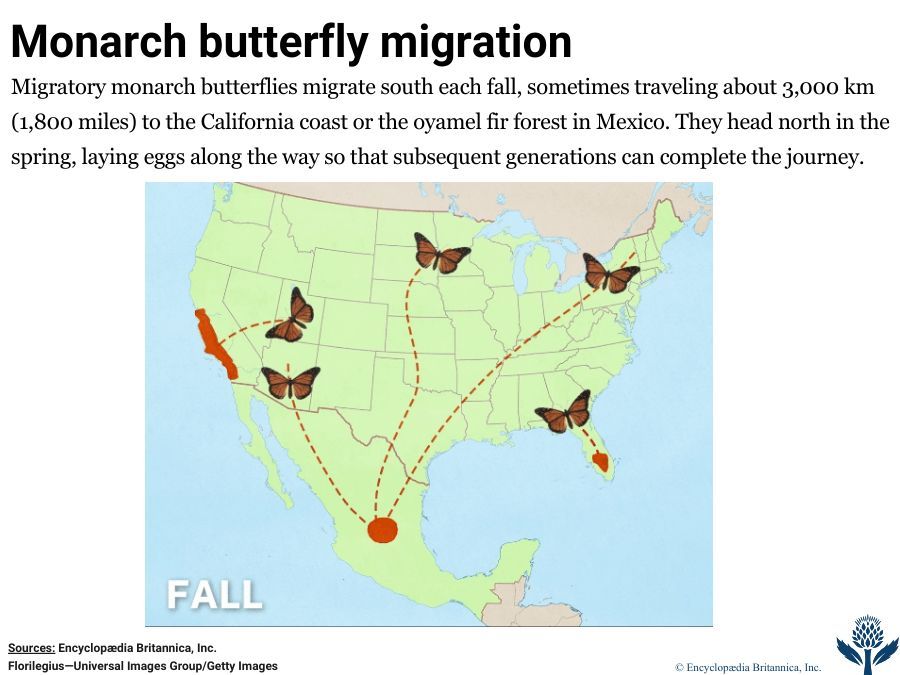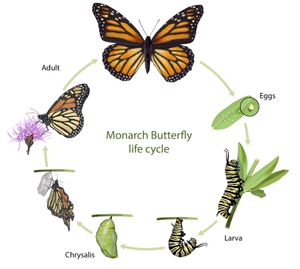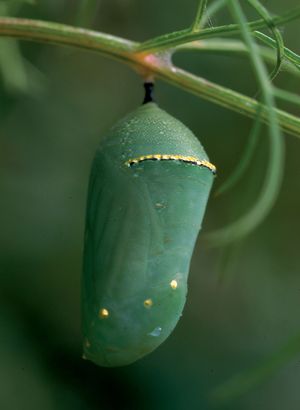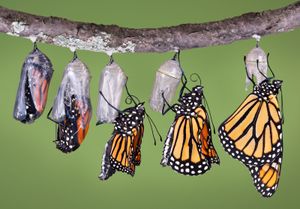monarch butterfly
News •
monarch butterfly, (Danaus plexippus), familiar member of the milkweed butterfly group (subfamily Danainae, order Lepidoptera) known for its large size, its orange and black wings, and its long annual migrations. Monarchs are concentrated in North, Central, and South America but can also be found in Australia, Hawaii, India, and other locations, albeit intermittently in some. Several subspecies of monarchs have been recognized. The endangered subspecies Danaus plexippus plexippus is a migratory monarch found primarily in North America and occasionally on islands in the Caribbean region. The subspecies D. plexippus megalippe is a nonmigratory form that occurs on the Cayman Islands in the Caribbean.
Physical description and life cycle
The monarch’s wingspan averages 90 to 100 mm (about 4 inches). The coloration of the orange wings, marked by black veins and a black border with two rows of spots, warns predators of the insect’s bad taste. The viceroy butterfly (see brush-footed butterfly) and the monarch share similar coloration. Indeed, like the monarch, the viceroy is unpalatable to some of its predators. Hence, it is believed that the two noxious organisms resemble one another as a form of defense against predators and that the relationship between them serves as an example of Müllerian mimicry.
The monarch caterpillar is easily recognized by its vertical stripes of black, white, and yellow-green. Eggs are laid singly on any of a number of milkweed (Asclepias) species found throughout the monarch’s range, and the caterpillars feed exclusively on these plants. Milkweeds produce acrid milky juices that contain toxic compounds called cardenolides, which are stored in the voracious caterpillar’s body and make the larva and its subsequent stages distasteful to predators. After several molts, the caterpillar attains a length of 45 mm (almost 2 inches).
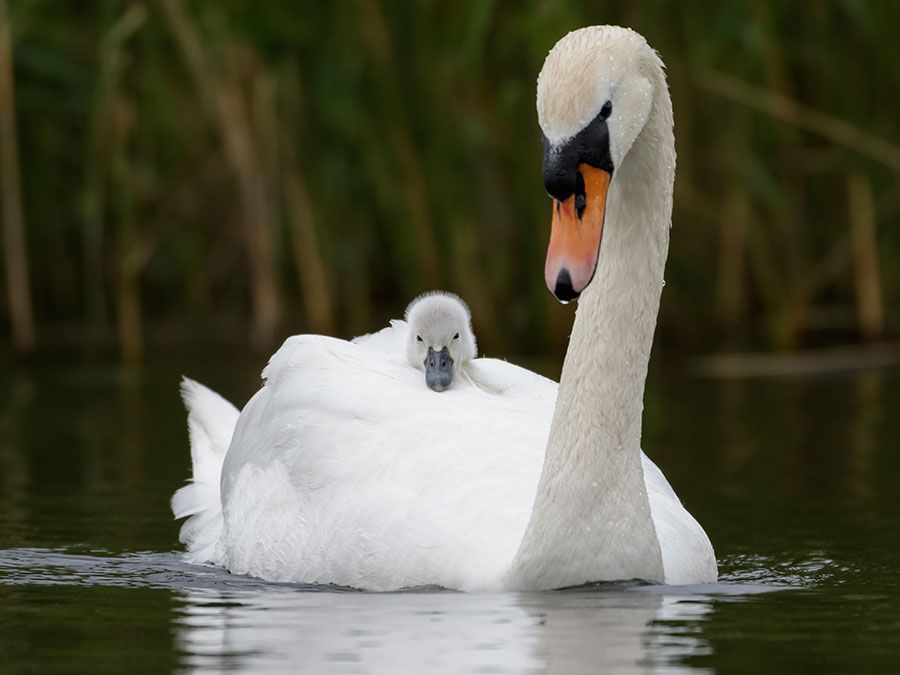
The fully grown caterpillar usually leaves its milkweed plant to pupate elsewhere as a pale green, golden-spotted chrysalis. After 10–14 days the chrysalis becomes transparent, and the metamorphosed butterfly’s dark body is visible. The adult emerges upside down and spends several hours drying its wings before being able to fly. Feeding on a variety of nectar sources, adults live only a few weeks—except those that migrate south and overwinter in Mexico, which live seven to nine months. Thus, about four generations of monarchs occur annually.
Studies of different populations of monarchs in North and Central America and on certain islands have revealed differences in wing and body morphology in relation to migration patterns and breeding behavior. For example, monarch populations in eastern North America, which undertake long-distance migrations, possess large bodies and large angular forewings. In contrast, nonmigratory monarchs found in Puerto Rico, southern Florida, Costa Rica, and Hawaii have smaller bodies and smaller forewings. Monarchs found in western North America possess small bodies and large wings, an adaptation that scientists believe may be associated with a reliance on gliding flight. Research has shown that the various body traits and wing traits of monarchs are inherited, indicating that they have evolved in response to a combination of factors, including migratory influences, genetic drift, and breeding behavior.
Migration
In North America the migratory monarch butterfly (D. plexippus plexippus) is a well-known example of a wide-range migrant with an extensive breeding range. Thousands of these monarchs gather in autumn and migrate southward, sometimes traveling about 3,000 km (1,800 miles) to overwinter on the California coast or in the mountains of the oyamel fir forest in Mexico. Certain other populations overwinter in Texas or Florida. The recapture of marked butterflies has revealed that they can travel as far as 130 km (80 miles) in one day. The longest distance recorded thus far for the complete flight of a migrant monarch butterfly is 3,010 km (1,870 miles). Upon reaching their overwintering destination, the monarchs gather in sheltered sites, particularly on trees where they cluster on trunks and big branches to hibernate.
The monarchs begin to return north in the spring, feeding on nectar along the way. Some of the returning butterflies are members of the first generation that develops from the overwintered insects; others represent successive generations that develop as the insects progress toward more northern latitudes. Eggs are laid on milkweed plants encountered along the way, and a new generation hatches, matures, and continues the northward trip.
Threats
Most of the overwintering forests of the migratory monarch in Mexico are protected within the Monarch Butterfly Biosphere Reserve, a UNESCO World Heritage site. Although logging is banned there, illegal logging and degradation of the forest have threatened the survival of monarch populations. Likewise, ongoing land development in areas along the monarch’s different migratory routes is considered a serious threat to the ability of the species to successfully perform its annual migratory feat. Some researchers suspect that a loss of milkweed plants, associated with the expansion in the early 21st century of the use of genetically modified herbicide-resistant crops in the United States, has further placed the monarch’s long-term survival in jeopardy. Finally, anthropogenic climate change has significantly impacted the migratory monarch butterfly and is expected to continue to pose an existential threat. Recurring drought in parts of western North America, exacerbated by global warming, has affected the growth of native milkweed populations and increases the frequency of catastrophic wildfires throughout monarch habitats. Extreme weather of all kinds can kill migrating butterflies before they have completed their life cycles, and changes in temperature regimes can trigger early migrations that occur before milkweed plants or nectar sources are widely available.
Scientists’ ability to determine the monarch’s population status has been challenged by difficulties in monitoring populations accurately and by a limited knowledge of naturally occurring annual and geographical population fluctuations. Indeed, estimates of their decline between 2010 and 2020 range from 22 to 72 percent. However, given the myriad of threats and a definite and dramatic population decline, the migratory subspecies (D. plexippus plexippus) was listed as an endangered species on the International Union for Conservation of Nature (IUCN) Red List of Threatened Species in 2022.

